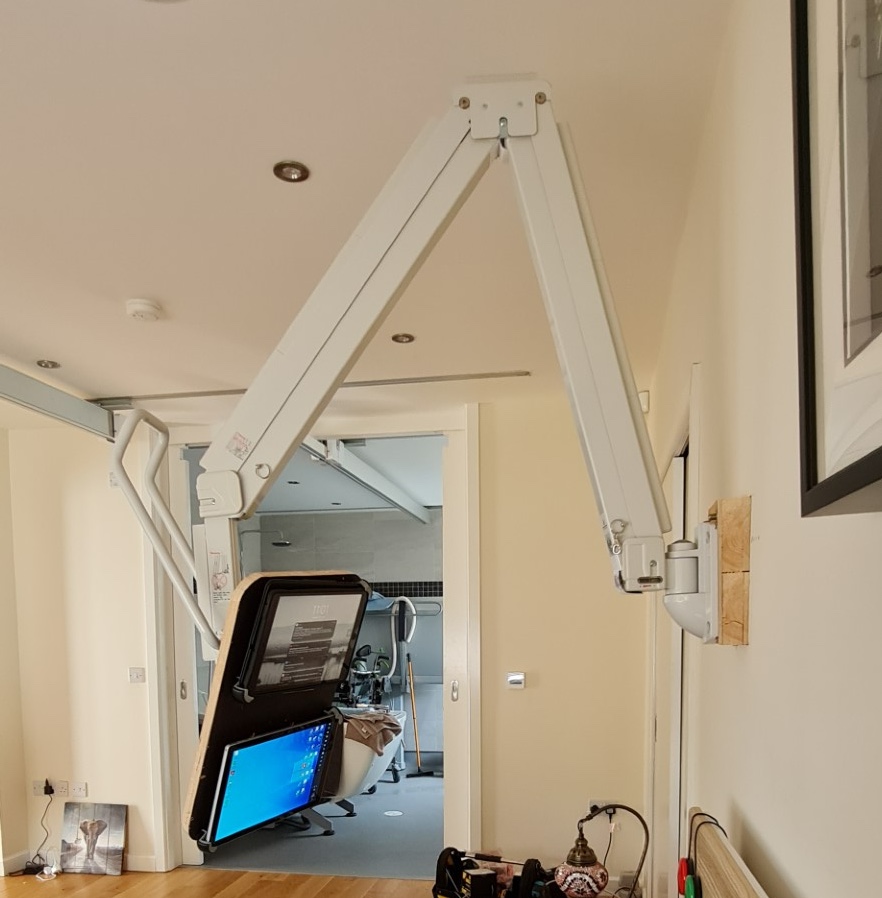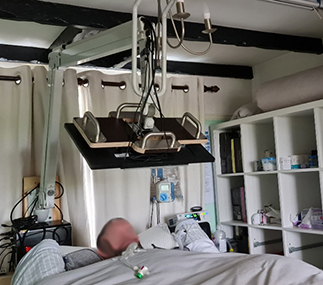Case Study
“How can I use my devices, even when not in my wheelchair?”
Introduction
For adults and children living with Cerebral Palsy (CP), technology can be a powerful ally, giving the ability to perform tasks that non-disabled people often take for granted.
However, the symptoms of CP can introduce barriers when it comes to technology access. Difficulties with speech and/or motor functioning, being a wheelchair user, or facing debilitating illness more regularly than the average person can all contribute. For some of my clients this means having to rely more heavily on others for day-to-day tasks. In many cases though, some relatively minor, un-invasive adaptations can support a person with CP to use technology independently or semi-independently, making work, education, leisure and entertainment instantly more accessible.
In this case study, I provide a detailed account of how I helped one individual with Cerebral Palsy regain some independence by using an IPad, Windows device, a hospital type articulating arm and some innovative adaptations.
Definition Of Cerebral Palsy
Cerebral Palsy is defined as “the name for a group of lifelong conditions that affect movement and co-ordination. It’s caused by a problem with the brain that develops before, during or soon after birth.” Symptoms of CP can include issues with movement, speech, vision and swallowing (NHS). The condition affects everyone differently and symptoms vary from mild to severe.
Understanding The Impact Of CP
My client uses an IPad and Windows touch screen for work and entertainment, but up until now has only been able to use these devices when sitting in their wheelchair. My client posed the question: “Is there a way I can use my devices when I’m not in my wheelchair, for example in bed?” It’s not much to ask. Especially when you consider that the ability to use our devices first thing in the morning, last thing at night or when we are in bed due to illness is something the average person does with ease.
Although able to use a touch screen, my client is unable to hold up a device due to limited upper limb movement resulting from CP. I could see that an adaptable solution was needed that would hold up both devices so that my client could use them with minimal support. So, I set about building a bespoke, mounted double-device holder for the two screens.
Bespoke Assistive Technology
The solution involved some new equipment, as well as modifications to the tech my client already had. I had the idea to attach a hospital type double-device holder to an articulating arm, which would be fastened to the wall behind the bed. The two screens can therefore be held in a position that is comfortable both to reach and see. When the IPad is in use, the Windows screen sits above, and vice versa with the ability for a care team or whoever happens to be around to use handles to rotate the double-device holder on my client’s request, giving access either device.
Despite the minimal intervention needed by the care team when my client wishes to switch screens, this bespoke assistive technology solution provides much more access and independence than my client has ever had before.

Benefits Of This Assistive Technology Set Up
- Manoeuvrable
- Practical
- Life-improving
The ability of the wall-mounted arm to adjust side to side as well as up and down allows staff to quickly swing it out of the way when they need to help with personal care or medical scenarios.
This set-up is more practical than anything my client had used before consulting with Sensation CTS. They now require only brief assistance to rotate the two screens between the upper and the reachable lower position.
The main impact this assistive technology set up has had is that my client can now work, check emails and social media, and enjoy entertainment when confined to bed due to illness. Even on a regular day, just as many of us check our devices before bed and straight away after waking up in the morning, my client can do the same.
Where some of the challenges of living with Cerebral palsy presented a barrier to using devices in bed, the bespoke adaptation and implementation of technology, together with end-user support helped to provide an effective solution for the person. It is a practical concept that I believe can be applied more widely. This case study is a good example of how, when disability is viewed as a barrier to things in life, such as work and education, these barriers can often be broken down with the right solutions and adaptions.
Innovative Accessibility Solutions
Everyone I work with requires a bespoke set-up, with many factors to consider including the scope of their ability, their current assistive technology set-up, their aspirations and the space available. I am able to offer this because I have years of experience and an arsenal of assistive technology solutions to draw from and adapt to each clients’ particular wants and needs.
For example, in this case I applied knowledge I’d accrued from setting up a similar solution for another of my clients who has Motor Neuron Disease. I learned that the best way to set up a mounted arm for screen use (whether that be with Eye Gaze or a touch screen) is to attach it to the wall behind the user’s head, so that their screens can be angled for optimal comfort and control. Long-armed wall mounts usually found in hospital wards are useful for this type of bespoke assistive technology set-up, and with a few adaptions can become perfect solutions to improve accessibility.

It can take some trial and error to arrive at the best accessibility solutions, but with my own perseverance and the determination of my clients, we usually achieve results that exceed expectations.
Accessing Assistive Technology For Individuals With Cerebral Palsy Diagnosis
If you have CP or any other disability and are interested in the benefits of assistive technology, consider getting in touch with Sensation CTS. I can offer a consultation wherever you are in the UK, and immediately start implementing positive change to boost independence.
I bring relevant assistive devices to you on the very first visit, and think outside the box to adapt the tech for pretty much any living situation, and any level of ability. A bespoke assistive technology set up from Sensation CTS can help you achieve your goals.
I also have a large catalogue of assistive technology which I have amassed over the years. My clients enjoy access to these devices for try-outs and equipment loans in certain situations.
Funding Assistive Technology For Cerebral Palsy
In my blog, I have outlined some charities and funding available for people with various disabilities, that support with financial help, advice and equipment loans. Eligibility criteria and application processes vary, but it’s well worth having a read if you’re looking to help fund assistive technology for any disability, including Cerebral Palsy.
How a Sensation CTS client with Cerebral Palsy gained greater independence with bespoke accessible technology.